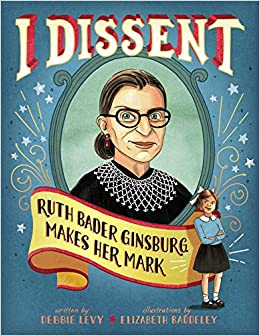Supreme Court justice Ruth Bader Ginsburg has spent a lifetime disagreeing: disagreeing with inequality, arguing against unfair treatment, and standing up for what’s right for people everywhere. This biographical picture book about the Notorious RBG, tells the justice’s story through the lens of her many famous dissents, or disagreements.
This inspiring Women’s History Month book can be used in speech therapy to address social/emotional issues like standing up for what you believe in and treatment of women and Jews. It is also great for noticing character expressions and for targeting vocabulary as well as for targeting sounds including: /r/ initial, /th/ final, /k/ initial and /j/ initial! Discover more of the speech and language teaching concepts for using I Dissent in speech therapy below:



